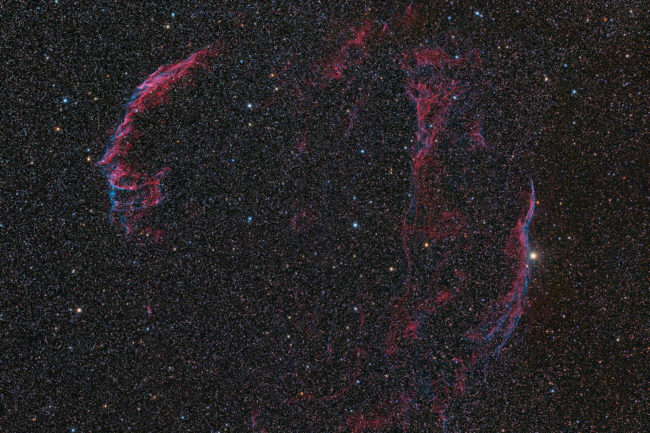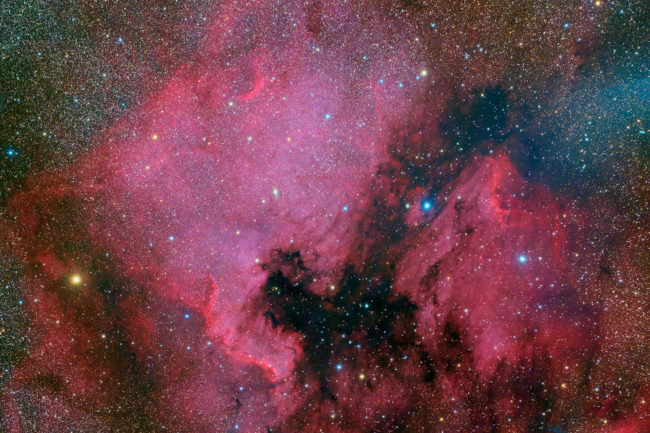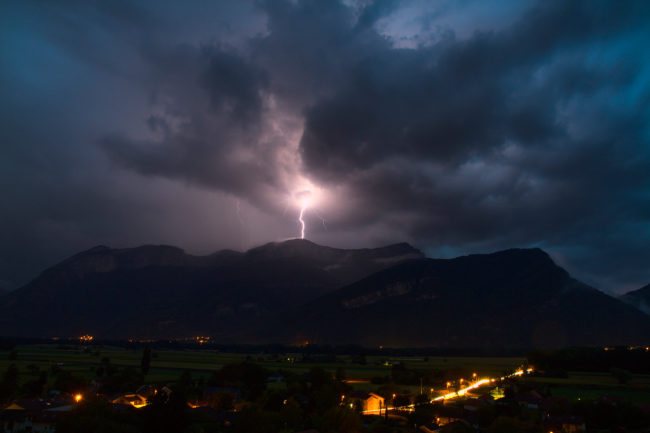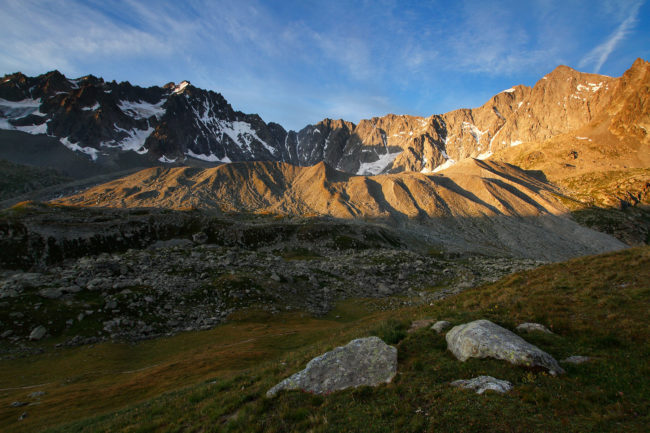Monthly Archives: August 2020

For this one, I choose to translate the french title. In english it is better known as Cygnus Loop or Veil Nebula. I thing the french name is more poetic.
The remains of a star that exploded about ten thousand years ago. We call it a supernova remnant.
It’s a great summer classic. I never miss to go to observe it visually. It is a pleasure to stroll along the filaments, from the large lace (on the left) to the small (on the right) via the Volutes of Williamina Fleming. Sometimes when the sky is really good, I can perceive other weaker part.
60 x 1 min
Camera : Nikon Z6 partially unfiltered
Telescope : Takahashi FSQ-106ED refractor.
Mount : Takahashi EM-200 homemade electronics.
Guiding : ZWO ASI290MM Mini on QHY OAG-M
Temperature : 23°C
SQM : 21
Software : auto-guiding with PHD2, acquisition with Astro Photography Tool, processing with PixInsight.
Location : Le Plan, Col du Banchet

Yes, they even have their nebula… I’m not telling you where the North America Nebula is or why we call it like that, it’s pretty obvious. It’s identified as NGC 7000. To its right is the Pelican Nebula, IC 5067 and IC 5070. The bird is a little harder to recognize.
These nebulae represent only part of the H-alpha complex found in the Cygnus. Ionized hydrogen is found in a large part of the constellation and even beyond.
90 x 1 min
Camera : Nikon Z6 partially unfiltered
Telescope : Takahashi FSQ-106ED refractor.
Mount : Takahashi EM-200 homemade electronics.
Guiding : ZWO ASI290MM Mini on QHY OAG-M
Temperature : 7°C
Humidity : 84%
SQM : 21.4
Software : auto-guiding with PHD2, acquisition with Astro Photography Tool, processing with PixInsight.
Location : Le Serpaton, Gresse-en-Vercors


